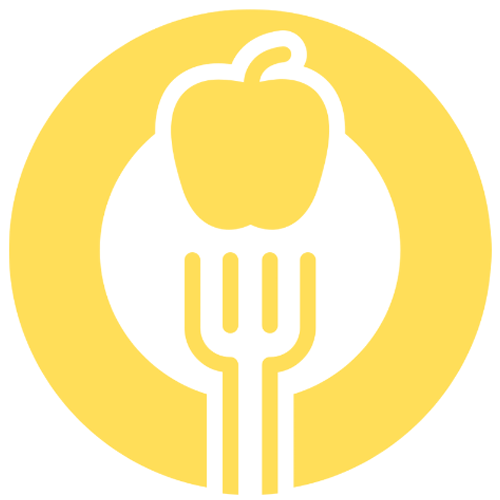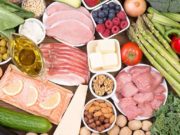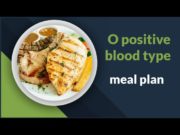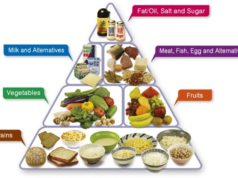How to start a diet? It’s a question that’s plagued humanity since the invention of the donut. But fear not, dear reader, for we’re about to embark on a journey through the world of healthy eating, where deliciousness meets discipline.
We’ll explore different diet types, from the calorie-conscious to the intermittent fasting fanatics, and everything in between. We’ll also delve into the art of setting realistic goals, making those pesky lifestyle changes, and planning meals that won’t leave you yearning for a pint of ice cream at 2 am.
So, buckle up, grab a water bottle, and get ready to conquer those cravings!
This guide will equip you with the knowledge and strategies to embark on a successful dietary journey. Whether you’re looking to shed a few pounds, boost your energy levels, or simply improve your overall well-being, we’ll provide you with the tools and insights to make informed decisions about your eating habits.
Remember, the key to success lies in finding a plan that fits your lifestyle and preferences, and making sustainable changes that you can stick with over the long haul. So, let’s get started and transform your relationship with food, one delicious bite at a time!
Understanding Diets
Diets are a popular topic, often discussed with a mix of excitement and dread. But what exactly are diets, and what makes them so diverse? Let’s break down the world of diets and explore their different types, benefits, and potential drawbacks.
Types of Diets, How to start a diet
Diets can be categorized into various types, each with its own set of rules and principles.
- Calorie Restriction:This involves reducing your daily calorie intake to create a calorie deficit, leading to weight loss.
- Intermittent Fasting:Instead of focusing on what you eat, this diet focuses on -when* you eat. It involves alternating periods of eating and fasting. Popular methods include the 16/8 method (fasting for 16 hours and eating within an 8-hour window) and the 5:2 diet (eating normally for five days and restricting calories for two days).
- Specific Food Plans:These diets emphasize specific food groups or patterns.
- Mediterranean Diet:Focuses on fruits, vegetables, whole grains, olive oil, and fish. It emphasizes healthy fats and limits red meat and processed foods.
- Ketogenic Diet (Keto):This diet is high in fat, moderate in protein, and very low in carbohydrates. The goal is to put your body into a state of ketosis, where it burns fat for energy instead of carbohydrates.
- DASH Diet:Designed to lower blood pressure, this diet emphasizes fruits, vegetables, whole grains, and low-fat dairy products. It limits saturated fat, cholesterol, and sodium.
Benefits and Drawbacks of Different Diets
Each diet type comes with its own set of potential benefits and drawbacks.
- Calorie Restriction:
- Benefits:Weight loss, improved blood sugar control, and reduced risk of chronic diseases.
- Drawbacks:Nutrient deficiencies, fatigue, and difficulty maintaining long-term.
- Intermittent Fasting:
- Benefits:Weight loss, improved insulin sensitivity, and potential benefits for brain health.
- Drawbacks:May not be suitable for everyone, especially those with certain medical conditions, and can lead to hunger and fatigue.
- Specific Food Plans:
- Mediterranean Diet:
- Benefits:Improved heart health, reduced risk of chronic diseases, and a balanced and enjoyable eating pattern.
- Drawbacks:May require significant lifestyle changes, and adherence can be challenging.
- Ketogenic Diet:
- Benefits:Rapid weight loss, improved blood sugar control, and potential benefits for epilepsy.
- Drawbacks:Can lead to nutrient deficiencies, fatigue, and digestive issues. It may also be difficult to maintain long-term.
- DASH Diet:
- Benefits:Lower blood pressure, reduced risk of heart disease, and improved overall health.
- Drawbacks:May require significant dietary changes, and adherence can be challenging.
- Mediterranean Diet:
Diet Comparison Table
| Diet Type | Key Characteristics | Pros | Cons |
|---|---|---|---|
| Calorie Restriction | Reduced daily calorie intake | Weight loss, improved blood sugar control | Nutrient deficiencies, fatigue |
| Intermittent Fasting | Alternating periods of eating and fasting | Weight loss, improved insulin sensitivity | May not be suitable for everyone, hunger, fatigue |
| Mediterranean Diet | Emphasis on fruits, vegetables, whole grains, olive oil, and fish | Improved heart health, balanced eating pattern | Significant lifestyle changes, adherence challenges |
| Ketogenic Diet | High fat, moderate protein, very low carbohydrates | Rapid weight loss, improved blood sugar control | Nutrient deficiencies, fatigue, digestive issues |
| DASH Diet | Emphasis on fruits, vegetables, whole grains, low-fat dairy | Lower blood pressure, reduced risk of heart disease | Significant dietary changes, adherence challenges |
Setting Realistic Goals
Let’s face it, the idea of shedding pounds can be thrilling, but setting unrealistic goals is like trying to sprint a marathon – you’ll probably end up exhausted and discouraged before you even reach the finish line. So, how do you set weight loss goals that are both ambitious and achievable?
Let’s dive into the world of realistic weight loss goals and discover how to make your journey a success story.
Achievable Weight Loss Goals
It’s important to remember that sustainable weight loss is a marathon, not a sprint. Aiming for rapid weight loss can be tempting, but it often leads to yo-yo dieting, where you lose weight quickly only to gain it back just as fast.
Instead, focus on gradual and steady weight loss, which is much more likely to stick in the long run.
A healthy and sustainable weight loss goal is to aim for 1-2 pounds per week.
Think of it this way: losing 1-2 pounds per week means you’re shedding about 500-1000 calories per day. This is a realistic and achievable deficit that can be achieved through a combination of dietary changes and regular exercise.
Starting a diet can be tough, but remember, it’s a marathon, not a sprint. You’ll have those moments where you crave a sugary treat, and that’s where the magic of can diet coke comes in. It satisfies that sweet tooth without the extra calories, allowing you to stay on track with your goals.
Just remember, moderation is key, even with diet soda!
Examples of Realistic Weight Loss Targets
Here are some examples of realistic weight loss targets for a week or a month:
- Weekly Target:Losing 1-2 pounds per week is a good starting point for most people. This translates to a total weight loss of 4-8 pounds per month.
- Monthly Target:Aiming for 4-8 pounds of weight loss per month is a realistic goal that can be achieved with consistent effort.
Remember, these are just examples. Your individual weight loss goals will depend on factors such as your starting weight, body composition, and activity level. Consult with a healthcare professional or registered dietitian to determine a personalized weight loss plan.
Making Lifestyle Changes
Dieting is not just about restricting what you eat; it’s about making sustainable lifestyle changes that support your health and well-being. This involves incorporating regular exercise into your routine and gradually shifting your eating habits towards healthier choices.
Incorporating Regular Exercise
Regular exercise is a crucial component of any successful diet plan. It not only helps you burn calories but also boosts your metabolism, improves your mood, and reduces your risk of chronic diseases. Aim for at least 30 minutes of moderate-intensity exercise most days of the week.
Making Gradual Changes to Eating Habits
Making drastic changes to your diet can be overwhelming and unsustainable. Instead, focus on making gradual, manageable changes over time. This could involve reducing portion sizes, swapping unhealthy snacks for healthier options, or cooking more meals at home.
“Small changes can lead to big results over time.”
Staying Motivated and Overcoming Challenges
Staying motivated on a diet can be challenging, especially when faced with temptations and setbacks. Here are some tips to help you stay on track:
- Set realistic goals:Avoid setting unrealistic goals that are too difficult to achieve. Instead, aim for small, achievable goals that you can build upon over time.
- Find a support system:Surround yourself with supportive friends, family, or a health professional who can encourage you and help you stay accountable.
- Reward yourself:Celebrate your successes, no matter how small, with non-food rewards. This could include a new workout outfit, a massage, or a night out with friends.
- Be patient and kind to yourself:Everyone makes mistakes. Don’t beat yourself up if you slip up. Just get back on track and keep moving forward.
Planning Your Meals
Planning your meals is crucial for successful weight management. It helps you make healthier choices, avoid impulsive decisions, and ensure you’re getting all the essential nutrients your body needs.
Creating a Balanced Meal Plan
A balanced meal plan should include a variety of foods from all food groups. It should be tailored to your individual needs, taking into account your activity level, age, and health conditions.Here’s a simple guide to help you create a balanced meal plan:
- Choose lean protein sources:Include fish, chicken, beans, lentils, tofu, and eggs in your diet. These foods are rich in protein, which helps you feel full and satisfied.
- Load up on fruits and vegetables:Aim for at least five servings of fruits and vegetables daily. These foods are packed with vitamins, minerals, and fiber, which are essential for good health.
- Incorporate whole grains:Choose whole-wheat bread, brown rice, quinoa, and oatmeal over refined grains. These foods are a good source of fiber, which helps regulate blood sugar levels and promotes digestive health.
- Limit unhealthy fats:Reduce your intake of saturated and trans fats found in processed foods, fried foods, and fatty meats. Opt for healthy fats like olive oil, avocados, and nuts.
- Stay hydrated:Drink plenty of water throughout the day. Water helps keep you feeling full, aids in digestion, and supports overall health.
Healthy and Delicious Meal Recipes
Eating healthy doesn’t have to be boring. There are countless delicious and easy-to-prepare recipes that can help you stick to your diet plan. Here are a few examples:
- Grilled Salmon with Roasted Vegetables:This is a simple and nutritious meal that’s packed with flavor. Simply grill salmon fillets and roast your favorite vegetables, such as broccoli, carrots, and bell peppers. Drizzle with olive oil and season with salt and pepper.
- Chicken and Black Bean Burrito Bowls:These bowls are a great way to get a healthy and satisfying meal. Combine cooked chicken, black beans, brown rice, salsa, and your favorite toppings, such as avocado, cilantro, and lime juice.
- Lentil Soup:This hearty soup is a great source of protein and fiber. Simply simmer lentils with vegetables, such as carrots, celery, and onions, and season with herbs and spices.
Incorporating Variety and Avoiding Boredom
Sticking to a diet plan can be challenging, especially if you feel like you’re eating the same thing every day. Here are a few tips to help you incorporate variety and avoid boredom:
- Try new recipes:Experiment with different cuisines and flavors to keep your meals interesting. There are countless healthy recipes available online and in cookbooks.
- Use different cooking methods:Instead of always grilling or baking, try sautéing, roasting, or steaming your food. This can help add variety to your meals.
- Plan ahead:By planning your meals in advance, you can ensure you have a variety of healthy options available throughout the week.
Tracking Progress

Tracking your progress is like having a personal cheerleader for your diet journey – it keeps you motivated, shows you how far you’ve come, and helps you stay on track. It’s not just about weighing yourself every day (although that can be helpful); it’s about understanding how your food choices and exercise habits are affecting your overall health and well-being.
Understanding the Importance of Tracking
Tracking your food intake and exercise activity is crucial for several reasons. It allows you to see the big picture of your dietary and physical activity patterns. This insight can help you identify areas where you can make adjustments to achieve your goals.
Starting a diet can feel like climbing Mount Everest in flip-flops – daunting, but achievable with the right tools. One crucial tool is understanding the Keywords that define your dietary goals. Whether you’re aiming for weight loss, better health, or just a more mindful relationship with food, knowing the right words can unlock a whole world of knowledge and support.
For example, you might notice that you tend to overeat on weekends or that you’re not getting enough protein. This information can then guide your efforts to improve your diet and exercise habits.
Effective Tracking Methods
There are various ways to track your progress effectively. Here are some popular methods:
Food Journal
Keeping a food journal is a simple yet effective way to track your food intake. It involves writing down everything you eat and drink throughout the day, including the portion size. You can use a notebook, a spreadsheet, or a dedicated app.
Keeping a food journal can help you become more aware of your eating habits and identify patterns.
Fitness Tracker
Fitness trackers are wearable devices that monitor your physical activity, such as steps taken, calories burned, and sleep patterns. They can also track your heart rate and provide insights into your overall fitness level.
Fitness trackers can be particularly helpful for staying motivated and setting achievable goals.
Other Tracking Tools
Beyond food journals and fitness trackers, there are other tools you can use to track your progress. For instance, you can take progress photos to monitor changes in your body composition.
Tracking your progress, regardless of the method you choose, can help you stay motivated and accountable.
Starting a diet can feel like climbing Mount Everest in flip-flops, but don’t worry, you don’t have to go it alone! There are tons of resources out there, like this free diet plan for weight loss for female that can help you navigate the treacherous terrain of healthy eating.
Remember, the key is to find a plan that fits your lifestyle and your taste buds, because let’s face it, no one wants to eat kale smoothies for the rest of their lives! So, grab your metaphorical hiking boots and get ready to conquer those cravings!
Seeking Professional Guidance
Navigating the world of diets can be overwhelming, especially with the abundance of conflicting information available. While you can find plenty of resources online and in books, sometimes it’s best to get expert advice. Consulting a registered dietitian or other healthcare professional can provide personalized guidance and support, ensuring your diet is safe, effective, and tailored to your unique needs.
Benefits of Professional Guidance
Seeking professional guidance from a registered dietitian or other healthcare professional offers numerous benefits. These professionals have the knowledge and expertise to help you develop a personalized diet plan that aligns with your health goals and preferences.
- Personalized Plans:A registered dietitian can create a diet plan that considers your individual needs, such as allergies, medical conditions, and lifestyle factors. This ensures the plan is safe and effective for you.
- Evidence-Based Recommendations:Registered dietitians base their recommendations on scientific evidence and current research. They can help you distinguish between fad diets and sustainable, healthy eating habits.
- Support and Motivation:Having a professional to guide you can provide motivation and support throughout your weight loss journey. They can help you overcome challenges, adjust your plan as needed, and celebrate your successes.
- Improved Health Outcomes:A registered dietitian can help you understand how food impacts your health and make informed choices to improve your overall well-being. They can address specific health concerns and offer strategies for managing chronic conditions.
Finding a Qualified Professional
Finding a qualified registered dietitian or other healthcare professional is crucial for getting the best advice. Here are some tips to help you in your search:
- Ask for Recommendations:Talk to your doctor, friends, or family members for recommendations. They may have experience with qualified professionals in your area.
- Check Credentials:Ensure the professional is a registered dietitian (RD) or licensed dietitian nutritionist (LDN). These credentials indicate they have met specific educational and experience requirements.
- Look for Specializations:If you have specific health concerns, such as diabetes or heart disease, look for a registered dietitian with expertise in that area.
- Consider Your Budget:Some registered dietitians offer free consultations or sliding scale fees. Check with different professionals to find one that fits your budget.
Final Review: How To Start A Diet
So there you have it, a comprehensive guide to starting a diet. Remember, the journey to healthier eating is a marathon, not a sprint. Be kind to yourself, celebrate your successes, and don’t be afraid to adjust your plan as needed.
With a little patience, perseverance, and a whole lot of deliciousness, you’ll be well on your way to achieving your dietary goals and feeling your best. Now go forth, my friends, and conquer those cravings!
FAQ Guide
What if I don’t like the taste of healthy food?
Don’t worry, healthy doesn’t have to be bland! Experiment with different recipes, spices, and cooking techniques to find flavors you enjoy. There are countless ways to make healthy food taste amazing. You can also try incorporating healthy versions of your favorite comfort foods.
How do I deal with cravings?
Cravings are normal! The key is to have a plan. Keep healthy snacks on hand, like fruits, vegetables, or nuts, to satisfy those urges. You can also try distracting yourself with activities you enjoy, like reading, exercising, or spending time with loved ones.
And remember, it’s okay to indulge in a treat occasionally, just don’t let it derail your progress.
Is it okay to skip meals on a diet?
Skipping meals is not recommended, especially if you’re following a calorie-restricted diet. It can lead to overeating later on and disrupt your metabolism. Instead, focus on eating regular, balanced meals and snacks throughout the day. If you’re feeling hungry, have a small, healthy snack to hold you over until your next meal.
What if I slip up and eat something unhealthy?
Don’t beat yourself up! Everyone makes mistakes. The important thing is to learn from it and get back on track. Don’t let one slip-up derail your entire progress. Focus on your next meal and make healthier choices going forward.
























